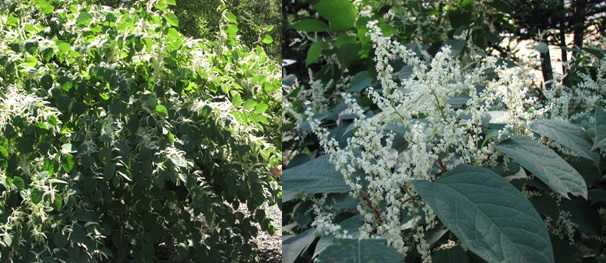SEASONAL DYNAMICS OF POLYSACCHARID CONTENT IN RAW MATERIALS REYNOUTRIA JAPОNICA
Abstract
The dynamics of the accumulation of water-soluble polysaccharides in various organs of Reynoutria japonica Hout (Polygonaceae), harvested in the Ussuriisk region of the Primorye Territory in different phases of vegetation, has been studied. As a result of the studies, four polysaccharide fractions were isolated from the raw materials of R. japonica organs: water-soluble polysaccharides, pectin substances, hemicellulose A and B, which are fixed in all organs of the plant during the observation period.
The chemical composition of R. japonica has been studied insufficiently and unilaterally. The secondary metabolites of the phenolic complex have been studied mainly, whereas there is practically no information on the carbohydrate composition, although this group of compounds plays an important role in the plant ecophysiology and shows a pronounced physiological activity. The conducted studies have established that the maximum content of biologically active polysaccharides (water-soluble polysaccharides and pectin substances) in the leaves is noted in the phase of the beginning of vegetation, in the buds of budding and flowering phases, in the roots in the phase of drying. The content of hemicellulose A and B is characterized by stability and changes insignificantly during the season.
The obtained results allow to establish scientifically justified terms of raw material preparation for effective practical use.
Downloads
Metrics
References
Sychev I.A. Mekhanizm povysheniia rezistentnosti organizma zhivotnykh pod deistviem rastitel'nykh polisa-kharidov v norme i patologii: avtoref. dis. … d.b.n. [The mechanism of increasing the resistance of the animal organism under the action of plant polysaccharides in the norm and pathology: the author's abstract. dis. ... Doctor of Biological Sciences]. Moscow, 2008, 36 p. (in Russ.).
Sosudistye rasteniia sovetskogo Dal'nego Vostoka [Vascular plants of the Soviet Far East], ed. S.S. Kharkevich. Lenin-grad, 1989, 390 p. (in Russ.).
The International Plant Names Index. Reynoutria japonica. [Electronic resource]. URL: http://www.ipni.org/ipni/simplePlantNameSearch.do?find_wholeName=Reynoutria+japonica
Tsvelev N.N. Flora sovetskogo Dal'nego Vostoka, 1989, vol. 4, pp. 25–122. (in Russ.).
Jäger E.J. Schr.-R.f. Vegetationskde., Sukopp-Festschrift, 1995, no. 27, pp. 395–403.
Anjen L., Park Ch.-W. Flora of China, 2003, vol. 5, p. 319.
Adachi N., Terashima I., Takahashi M. Annals of Botany, 1996, vol. 77, pp. 477–486.
Xiao K., Xuan L., Xu Y., Bai D. Zhongcaoyao, 2003, vol. 34, no. 6, pp. 496–498.
Vastano B., Chen Y., Zhu N., Ho C., Zhou Z., Rosen R. Journal of agricultural and food, 2000, vol. 48, no. 2, pp. 253–256.
Xiao K., Xuan L., Xu Y., Bai D., Zhong D., Wu H., Wang Z., Zhang N. European Journal of Organic Chemistry, 2002, no. 3, pp. 564–568.
Hua Y., Zhou J., Niw Cheng C. Natural product research and development, 2001, vol. 13, no. 6, pp. 16–18.
Iakimov P.A. Rastitel'nye resursy, 1965, vol. 1, no. 2, pp. 238–241. (in Russ.).
Zorikova S.P. Reinutriia iaponskaia (Reynoutria japonica Houtt.) v Primorskom krae (biologiia razvitiia, fla-vonoidnyi sostav, biologicheskaia aktivnost'): avtoref. diss. … kand. biol. nauk. [Reynaudia Japanese (Reynoutria japonica Houtt.) In the Primorsky Territory (biology of development, flavonoid composition, biological activity): Abstract of the author. diss. ... cand. Biol. science]. Vladivostok, 2011, pp. 11–13. (in Russ.).
Patent 2395967 (RU). 10.08.2010. (in Russ.).
Konstantinidou-Doltsinis S., Markellou E., Kasselaki A.M., Fanouraki M.N., Koumaki C.M., Schmitt A., Liopa-Tsakalidis A., Malathrakis N.E. BioControl, 2006, vol. 51, pp. 375–392.
Patent 2257910 (RU). 10.08.2005. (in Russ.).
Kimura Y., Okuda H. Journal of nutrition, 2001, vol. 131, no. 6, pp. 1844–1849.
Shaw R.H., Seiger L.A. Biological control of invasive plants in the Eastern United States, 2002, pp. 159–166.
Bubenchikova V.N., Kondratova Iu.A. Khimiia rastitel'nogo syr'ia, 2008, no. 3, pp. 185–186. (in Russ.).
Kirichenko E.B. Ekofiziologiia miaty: produktsionnyi protsess i adaptatsionnyi potentsial. [Ecophysiology of mint: pro-duction process and adaptive potential]. Moscow, 2008, 140 p. (in Russ.).
Maniakhin A.Iu., Zorikova O.G., Boitsova T.M., Zhuravleva S.V. Khimiia rastitel'nogo syr'ia, 2015, no. 4, pp. 155–158. (in Russ.).
Pavlova N.E., Iakimova E.P. Osenne-zimnii pokoi stepnykh rastenii Zabaikal'ia. [Autumn-winter peace of the steppe plants of Transbaikalia]. Chita, 2004, 73 p. (in Russ.).


This work is licensed under a Creative Commons Attribution 4.0 International License.
The authors, which are published in this journal, agree to the following conditions:
1. Authors retain the copyright to the work and transfer to the journal the right of the first publication along with the work, at the same time licensing it under the terms of the Creative Commons Attribution License, which allows others to distribute this work with the obligatory indication of the authorship of this work and a link to the original publication in this journal .
2. The authors retain the right to enter into separate, additional contractual agreements for the non-exclusive distribution of the version of the work published by this journal (for example, to place it in the university depository or to publish it in a book), with reference to the original publication in this journal.
3. Authors are allowed to post their work on the Internet (for example, in a university repository or on their personal website) before and during the review process of this journal, as this may lead to a productive discussion, as well as more links to this published work.











